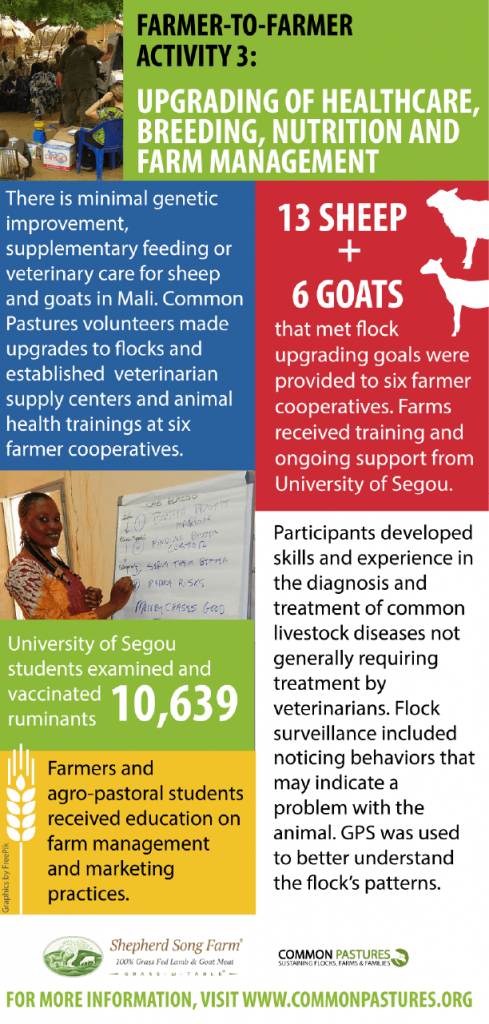
Farmer-to-Farmer: Mali (Infographic 4 of 4)
Mar. 23 | 2017
Farmer-to-Farmer: Mali (Infographic 4 of 4)
In order to sustain their flocks, all farmers need to know how to breed their animals and best practices to prevent health issues. The third set of assignments focused on making upgrades to flock genetics, establishing veterinary supply centers, and educating farmers on diagnosis and treatment of common livestock diseases. Additionally, farmers and Agro-pastoral technical school students received training on marketing and farm management practices.
There were 13 sheep and 6 goats that met flock upgrades goals provided to six farmer cooperatives. Farms received training and ongoing support from the University of Segou.
Regardless of breed, the choice of a breeding male is usually based upon:
- Age: Younger breeding males have a longer service expectancy than older.
- Health: Check ocular membranes and overall appearance.
- Confirmation: Males selected for breeding should be taller in stature, longer in length, and with depth of chest cavity than cohorts, and two well-formed testicles
Participants developed skills and experience in the diagnosis and treatment of common livestock diseases not generally requiring treatment by veterinarians. Flock surveillance included noticing behaviors that may indicate a problem with the animal. GPS was used to better understand the flock’s patterns.
Additionally, veterinarian supply centers were established and animal health trainings were held at six farmer cooperatives.
This is the last infographic in a four-part series that educates the public on our work with the Farmer-to-Farmer Program in Mali. View Part 1, Part 2 and Part 3.


